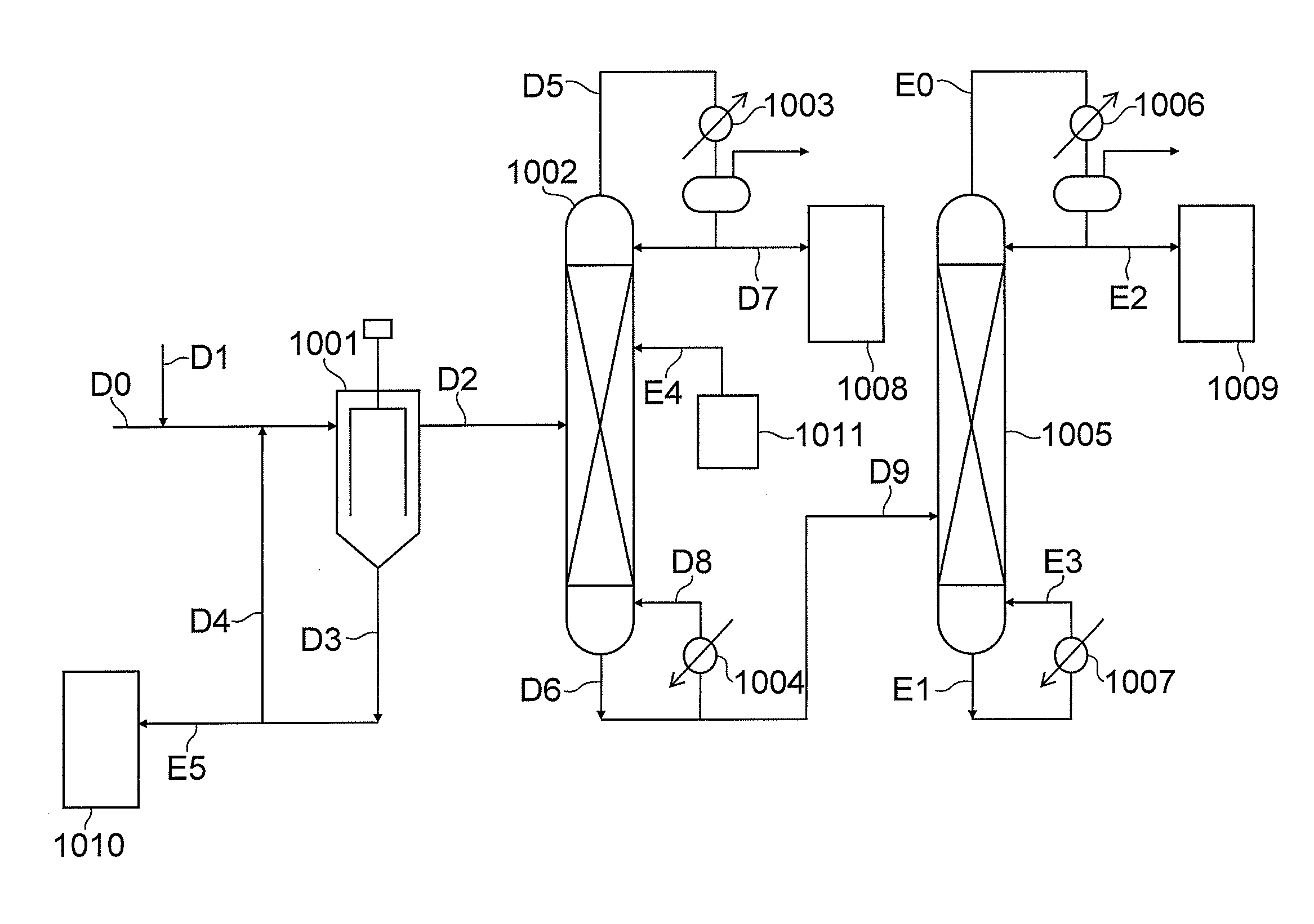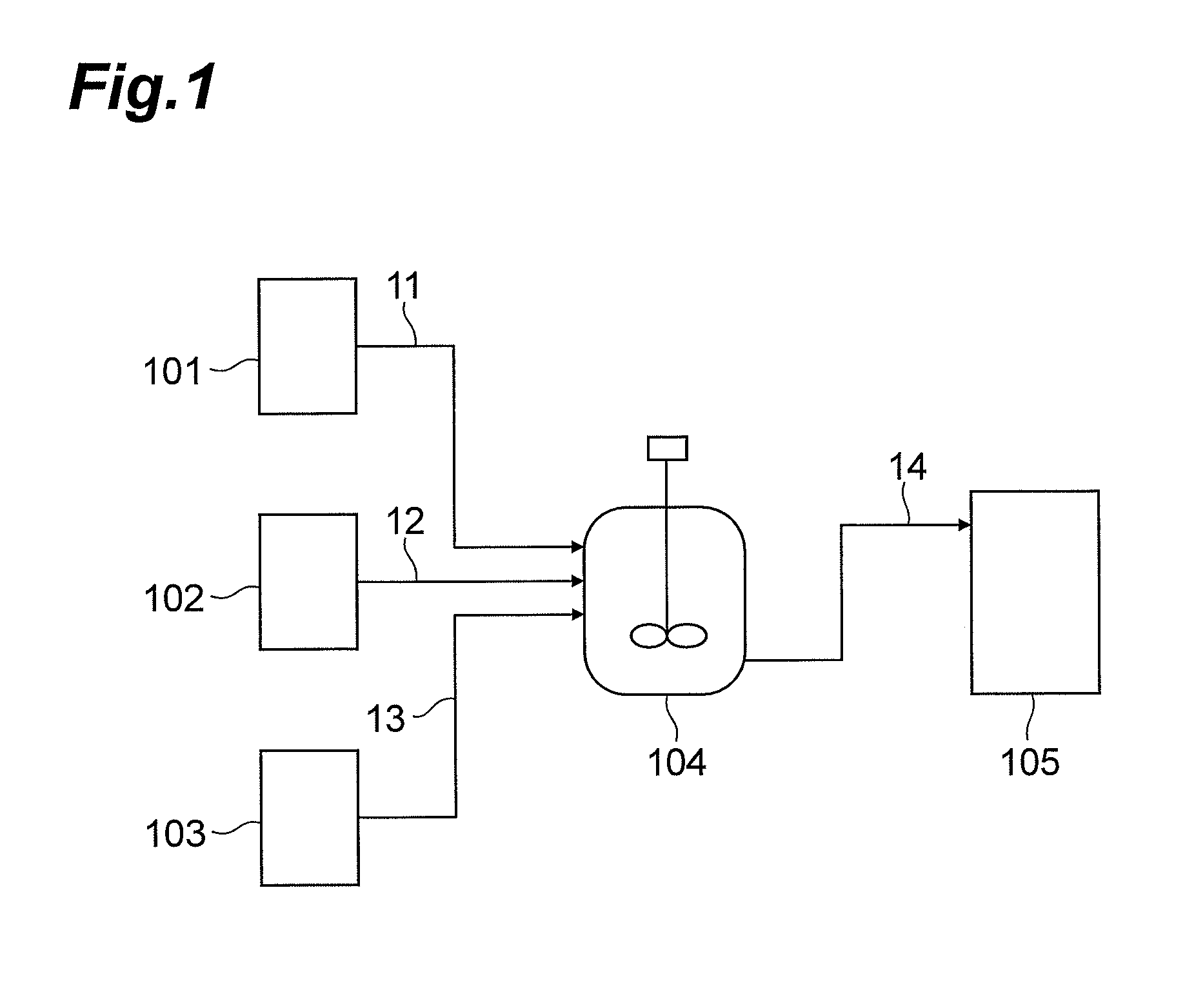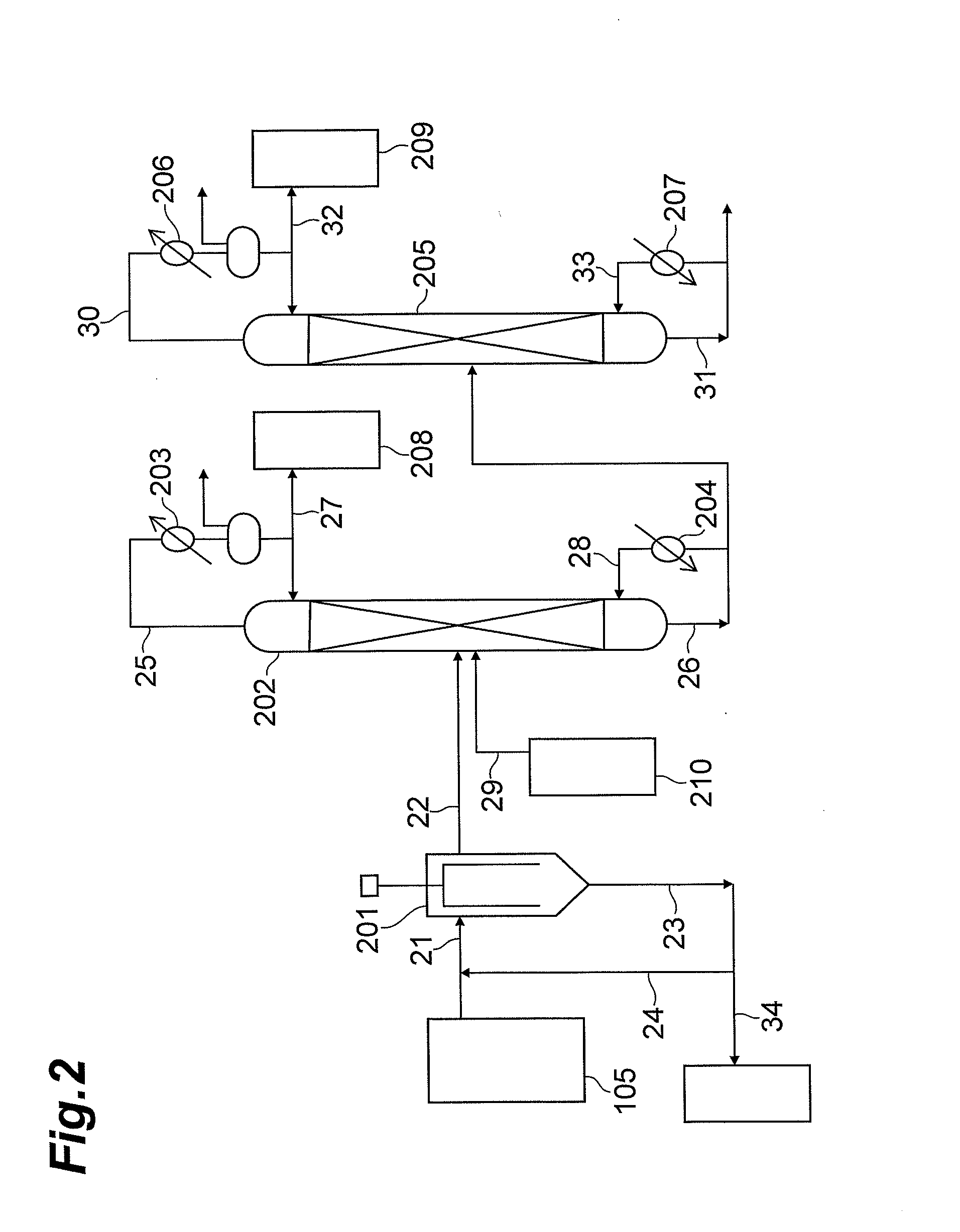Separation Method and Method for Producing Isocyanate
a separation method and isocyanate technology, applied in the direction of isocyanic acid derivative purification/separation, separation process, sustainable manufacturing/processing, etc., can solve the problems of product s, difficult distillation in the case, -to-left direction, etc., to achieve efficient separation and collection, efficient separation and collection
- Summary
- Abstract
- Description
- Claims
- Application Information
AI Technical Summary
Benefits of technology
Problems solved by technology
Method used
Image
Examples
example 1
Step (1-1): Production of N,N′-hexanediyl-dicarbamic acid diphenyl ester
[0270]Reactions were performed using an apparatus shown in FIG. 1.
[0271]In the state where a line 14 was closed, 13.50 kg (63 mol) of diphenyl carbonate (manufactured by Sigma-Aldrich Corp., USA) was supplied from a reservoir 101 through a line 11 to a 50-L (internal volume) baffled reaction container 104 made of SUS, and 9.87 kg (105 mol) of phenol (manufactured by Sigma-Aldrich Corp., USA) was supplied from a reservoir 102 through a line 12 to the reactor made of SUS. A solution temperature within the reactor 104 was adjusted to approximately 50° C., and 2.44 kg (21 mol) of hexamethylenediamine (manufactured by Sigma-Aldrich Corp., USA) was supplied at approximately 2.00 kg / hr from a reservoir 103 through a line 13 to the reactor 104.
[0272]As a result of analyzing the solution after reaction (hereinafter, also referred to as a “reaction solution (1)”) by liquid chromatography, N,N′-hexanediyl-dicarbamic acid d...
example 2
Step (2-1): Production of 3-(phenoxycarbonylamino-methyl)-3,5,5-trimethylcyclohexylcarbamic acid phenyl ester
[0281]Reactions were performed using the apparatus shown in FIG. 1.
[0282]Reactions were performed in the same way as in Step (1-1) of Example 1 except that: the amount of diphenyl carbonate used was set to 10.5 kg (49 mol); the amount of phenol used was set to 9.24 kg (98.3 mol); and 3.41 kg (20 mol) of 3-aminomethyl-3,5,5-trimethylcyclohexylamine (manufactured by Sigma-Aldrich Corp., USA) was used instead of hexamethylenediamine.
[0283]As a result of analyzing the solution after reaction (hereinafter, also referred to as a “reaction solution (2)”) by liquid chromatography, 3-(phenoxycarbonylamino-methyl)-3,5,5-trimethylcyclohexylcarb amic acid phenyl ester formed at a yield of 99.1%.
[0284]The line 14 was opened, and the reaction solution (2) was transported to the reservoir 105 through the line 14.
Step (2-2): Thermal decomposition of 3-(phenoxycarbonylamino-methyl)-3,5,5-trim...
example 3
Step (3-1): Production of N,N′-(4,4′-methanediyl-dicyclohexyl)-di(carbamic acid phenyl ester)
[0291]Reactions were performed using the apparatus shown in FIG. 1.
[0292]Reactions were performed in the same way as in Step (1-1) of Example 1 except that: the amount of diphenyl carbonate used was set to 13.3 kg (62 mol); the amount of phenol used was set to 11.2 kg (119 mol); and 3.26 kg (15.5 mol) of 4,4′-methylenebis(cyclohexylamine) (manufactured by Sigma-Aldrich Corp., USA) was used instead of hexamethylenediamine.
[0293]As a result of analyzing the solution after reaction (hereinafter, also referred to as a “reaction solution (3)”) by liquid chromatography, N,N′-(4,4′-methanediyl-dicyclohexyl)-di(carbamic acid phenyl ester) formed at a yield of 98.8%.
[0294]The line 14 was opened, and the reaction solution (3) was transported to the reservoir 105 through the line 14.
Step (3-2): Thermal decomposition of N,N′-(4,4′-methanediyl-dicyclohexyl)-di(carbamic acid phenyl ester) and separation a...
PUM
| Property | Measurement | Unit |
|---|---|---|
| boiling-point | aaaaa | aaaaa |
| boiling point | aaaaa | aaaaa |
| vapor pressure | aaaaa | aaaaa |
Abstract
Description
Claims
Application Information
 Login to View More
Login to View More - R&D
- Intellectual Property
- Life Sciences
- Materials
- Tech Scout
- Unparalleled Data Quality
- Higher Quality Content
- 60% Fewer Hallucinations
Browse by: Latest US Patents, China's latest patents, Technical Efficacy Thesaurus, Application Domain, Technology Topic, Popular Technical Reports.
© 2025 PatSnap. All rights reserved.Legal|Privacy policy|Modern Slavery Act Transparency Statement|Sitemap|About US| Contact US: help@patsnap.com



